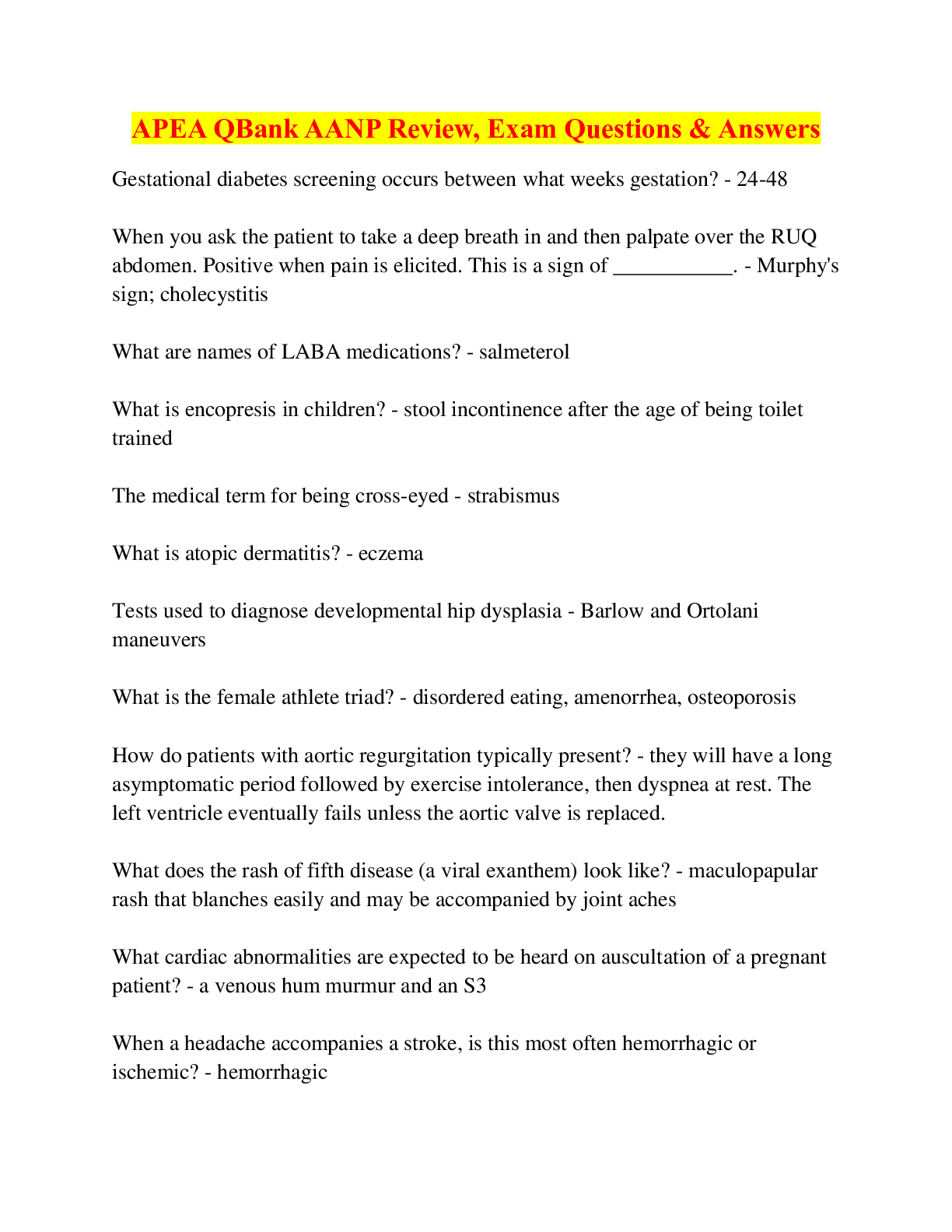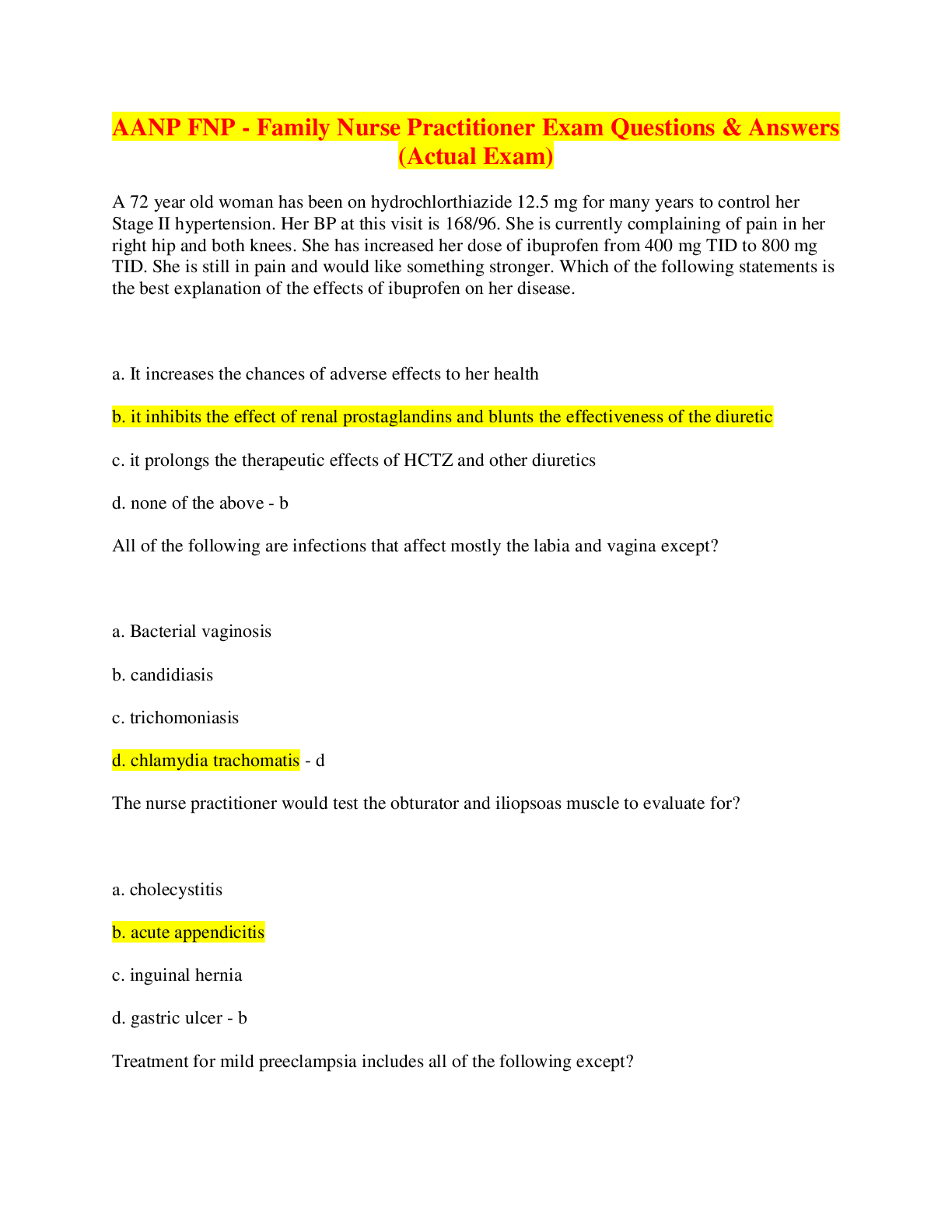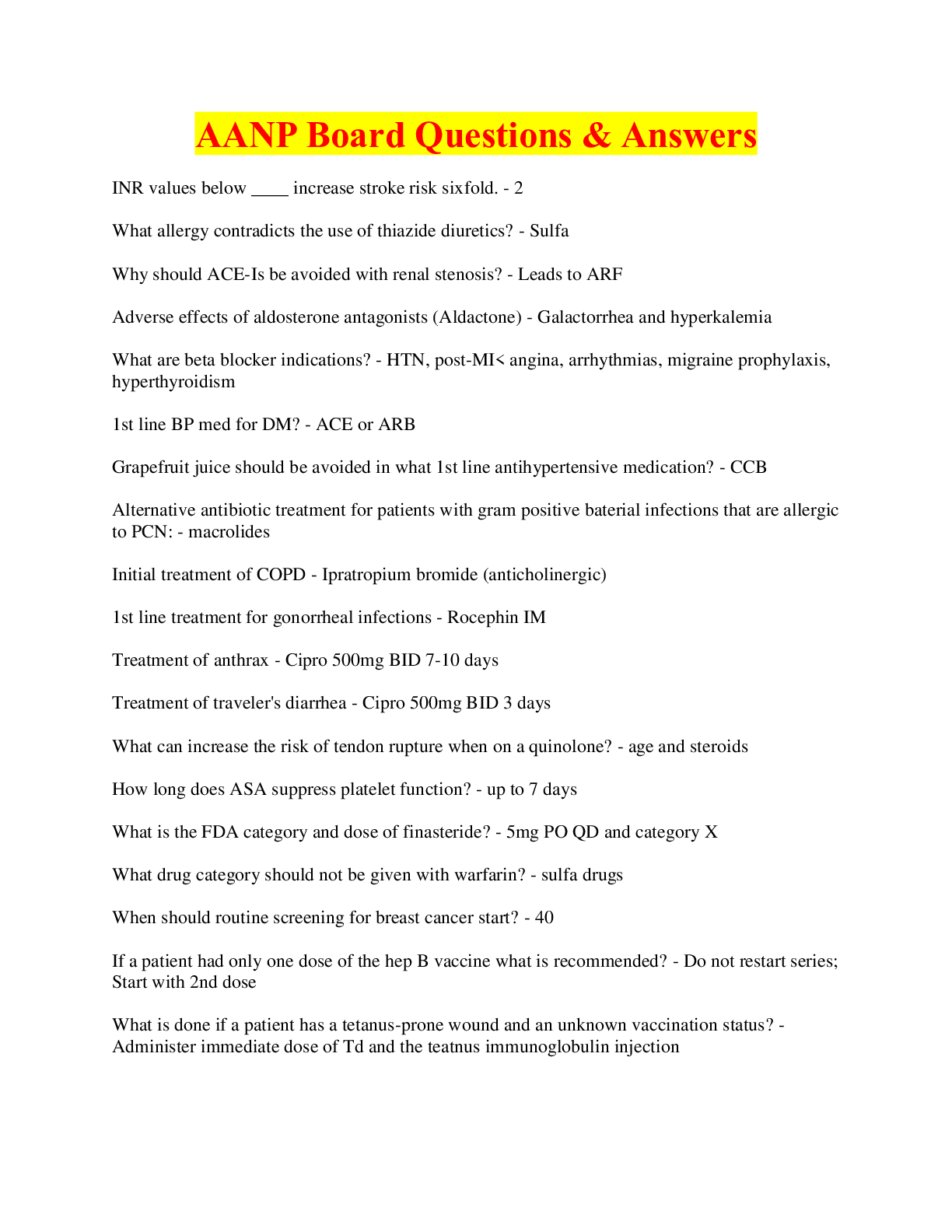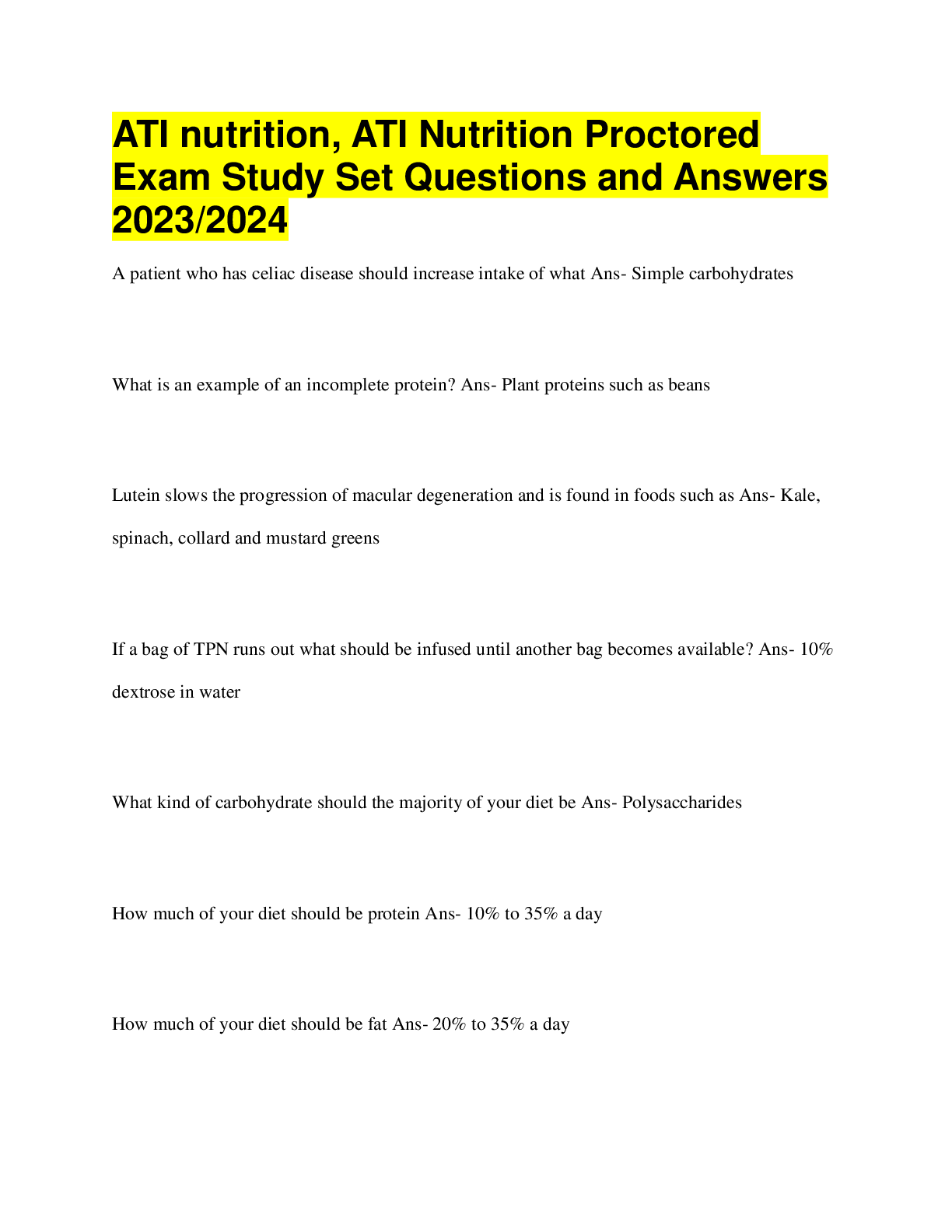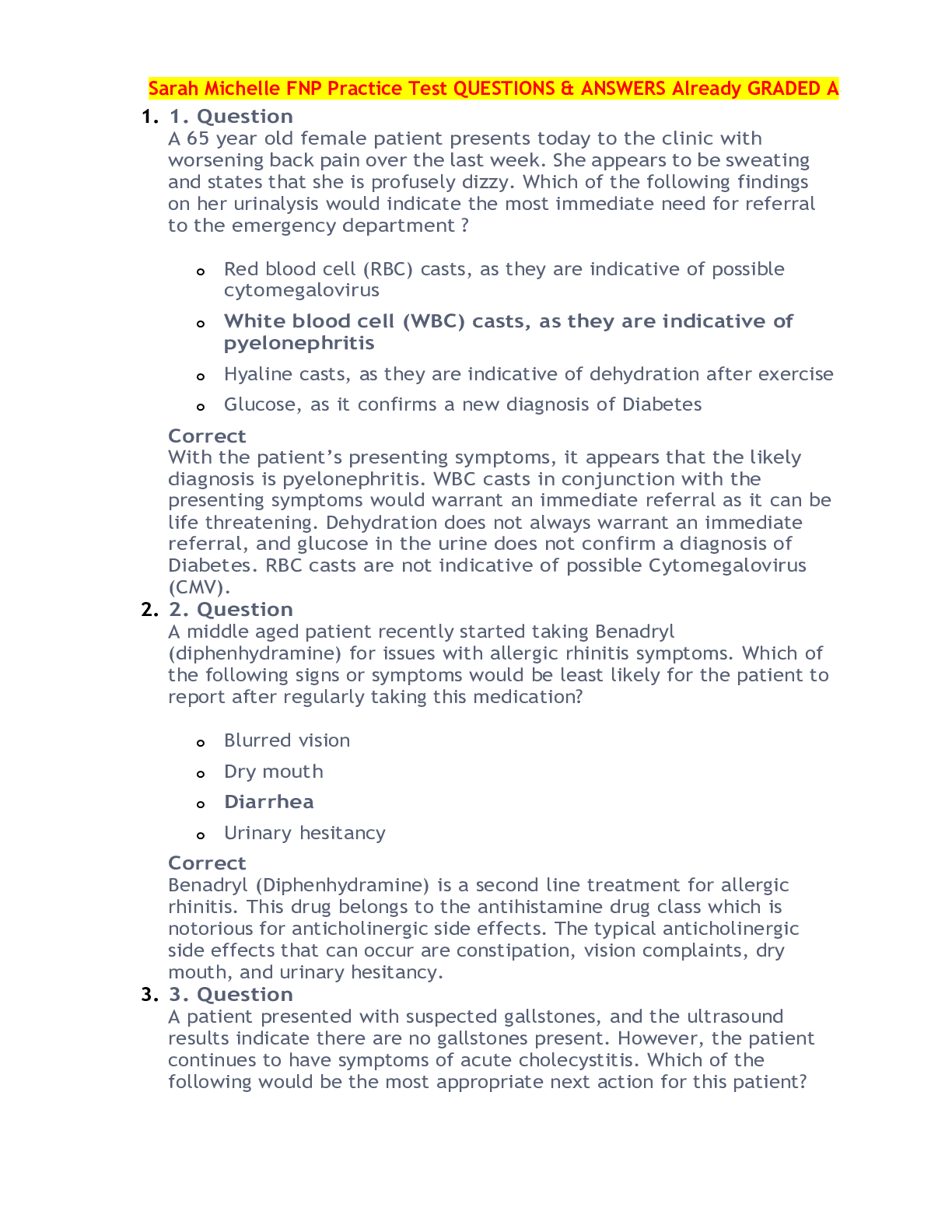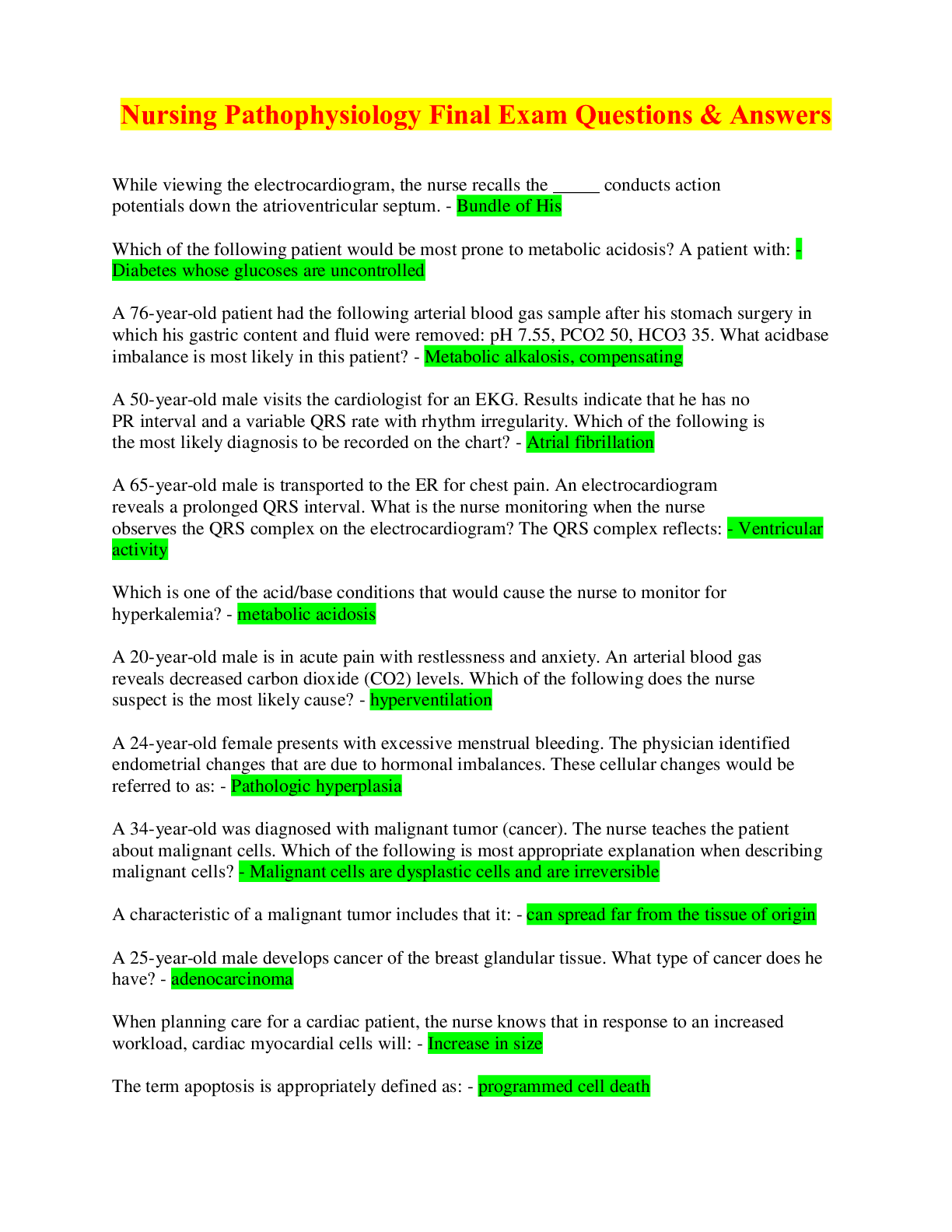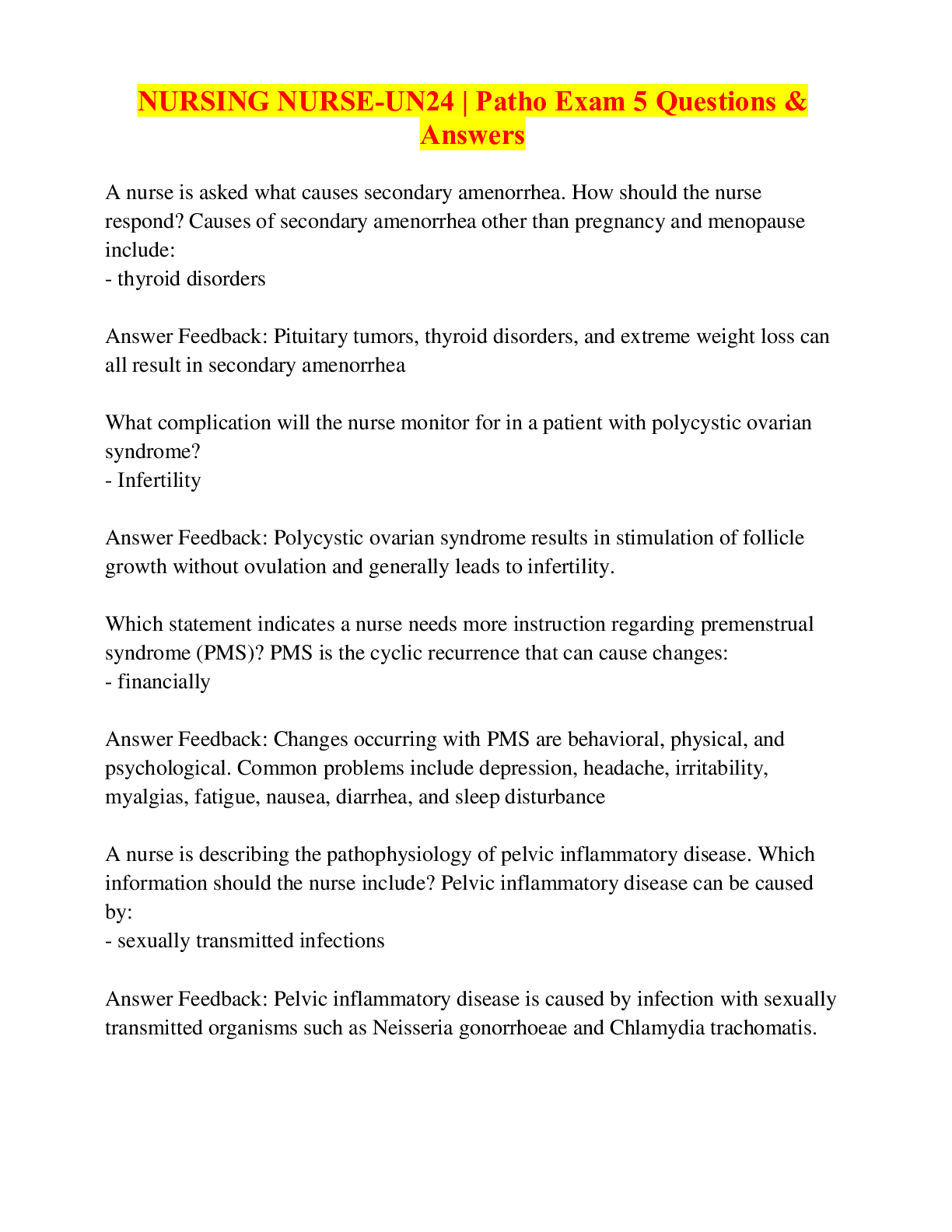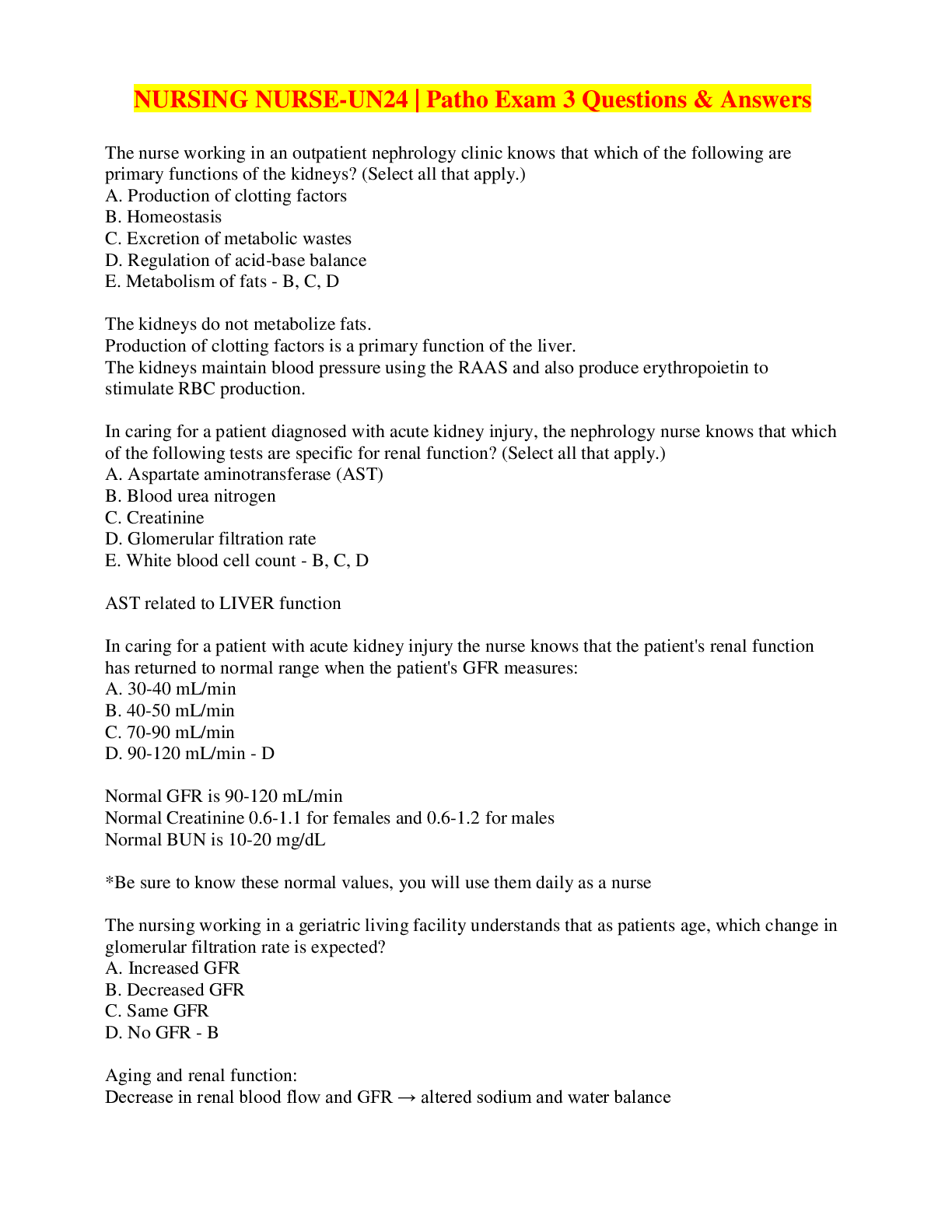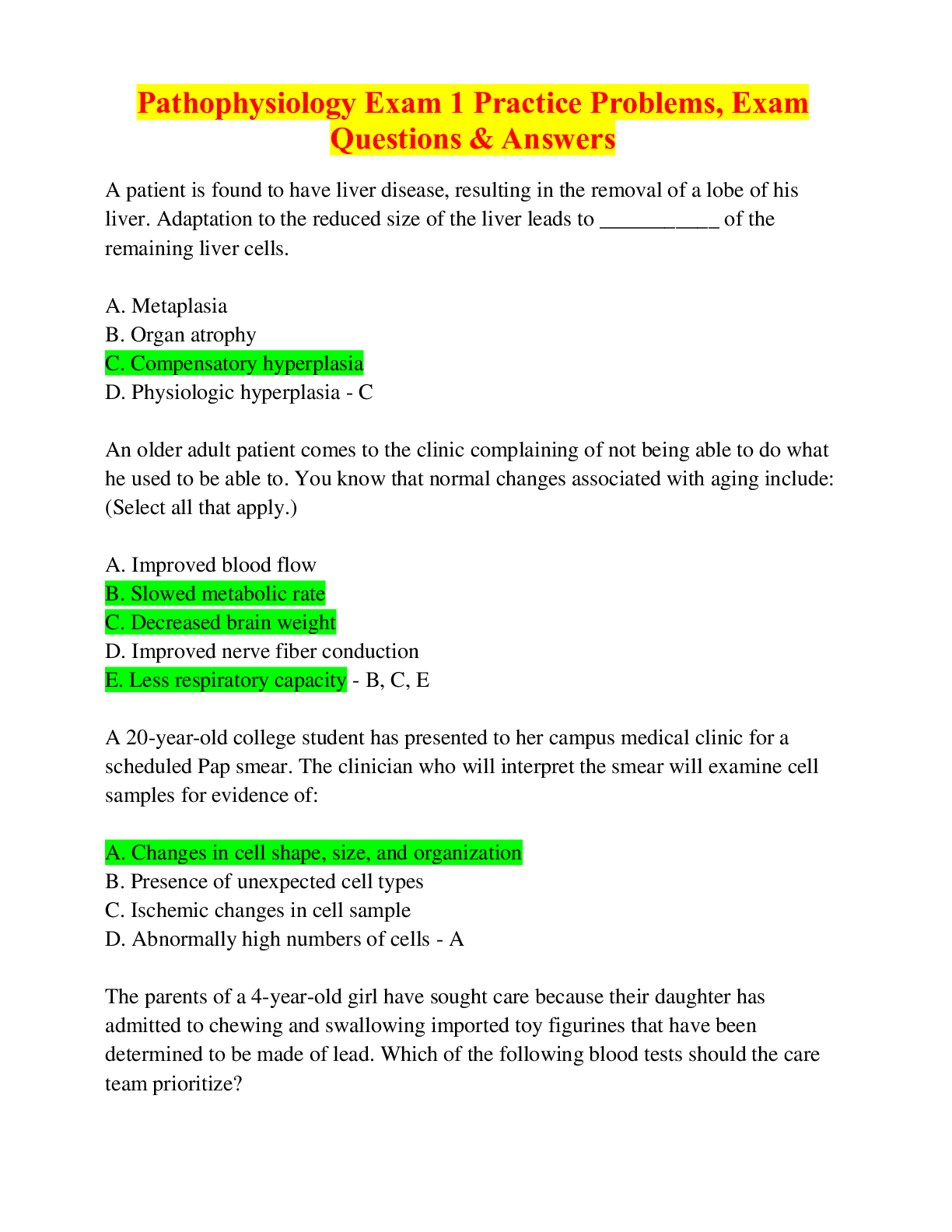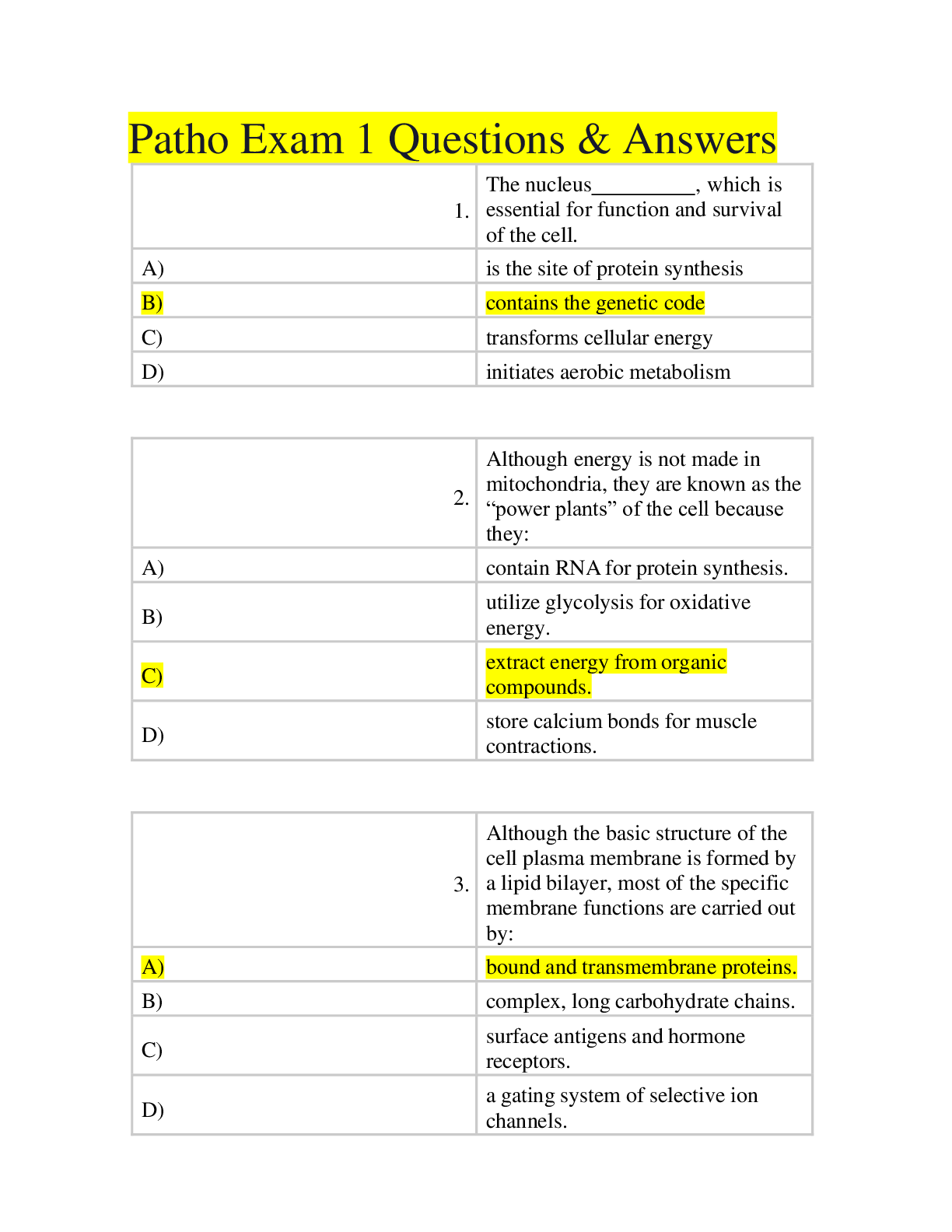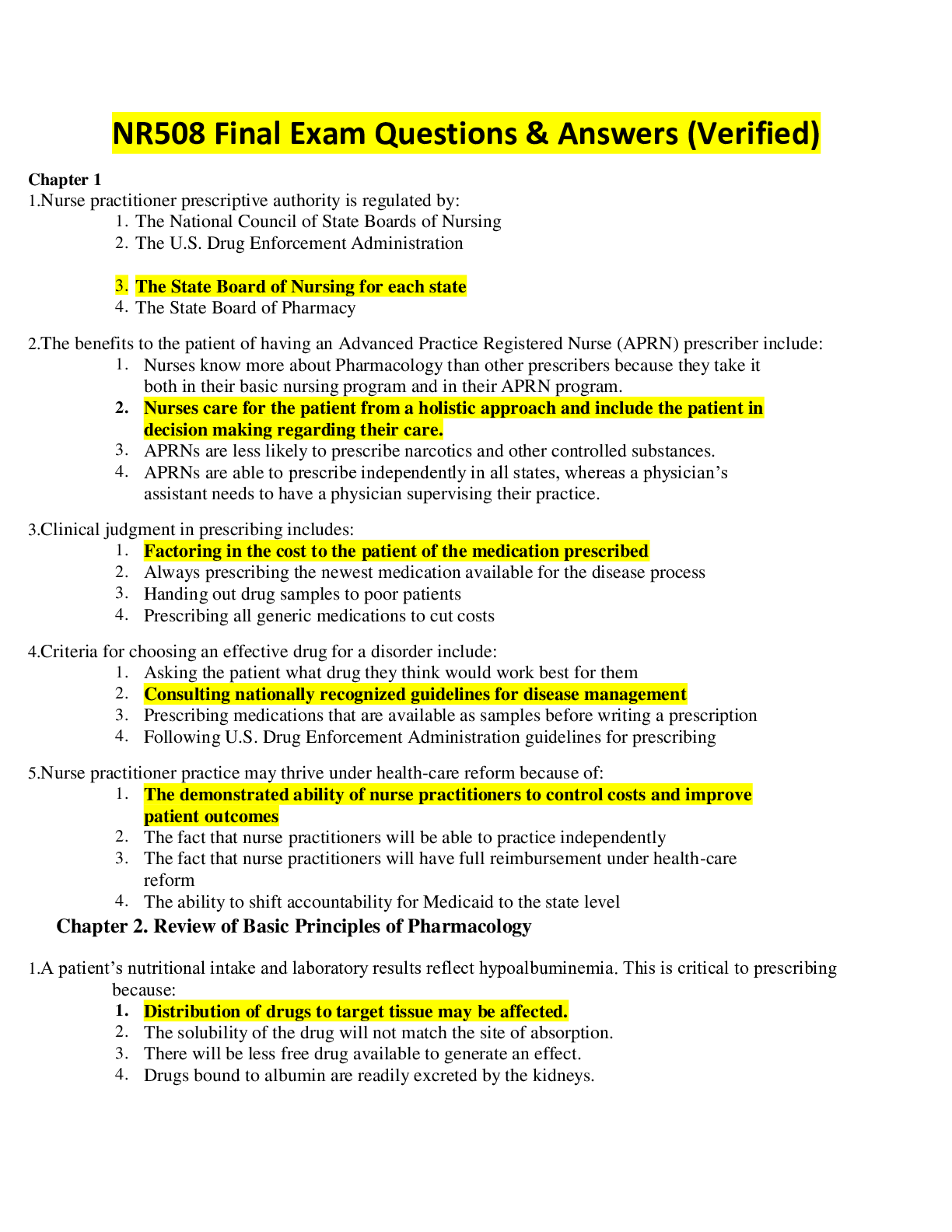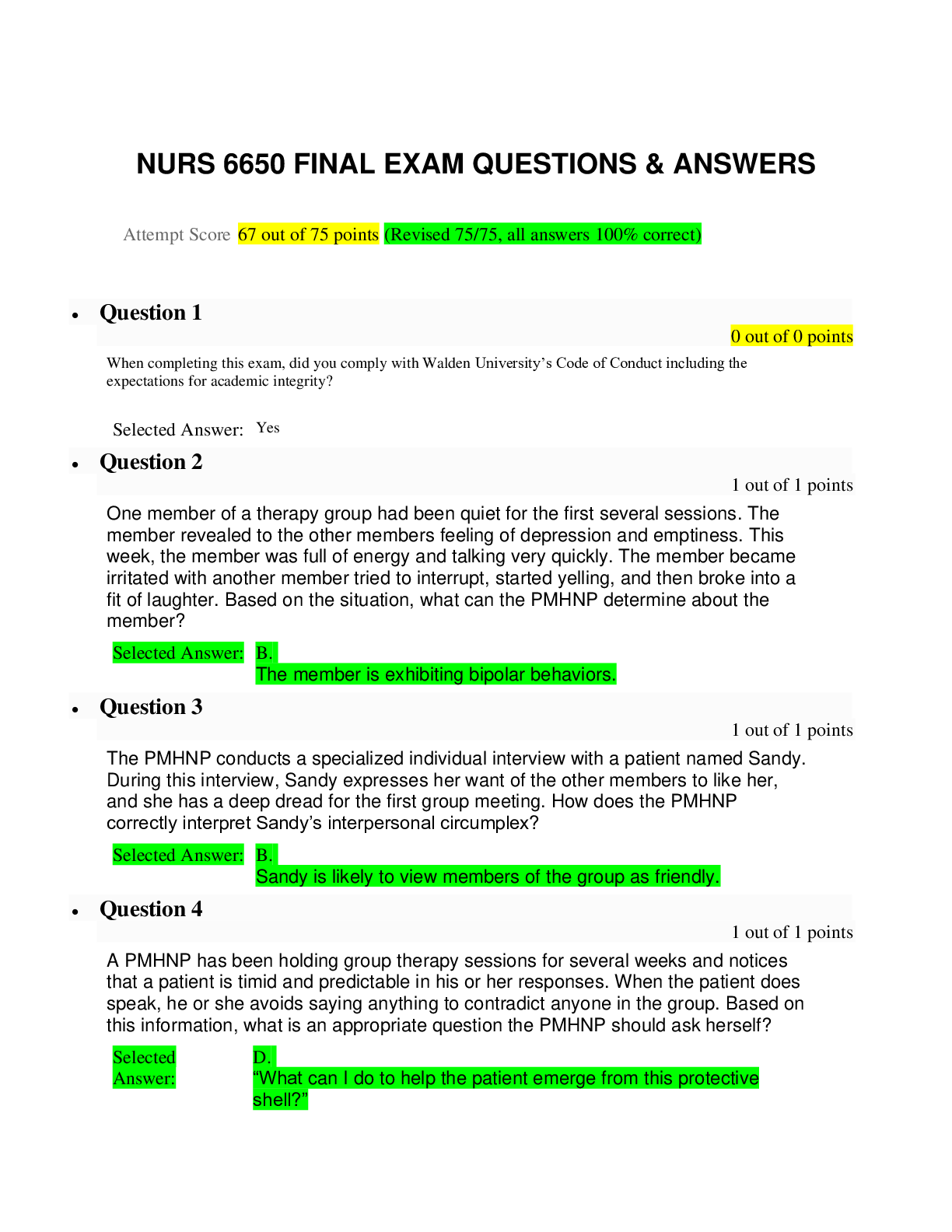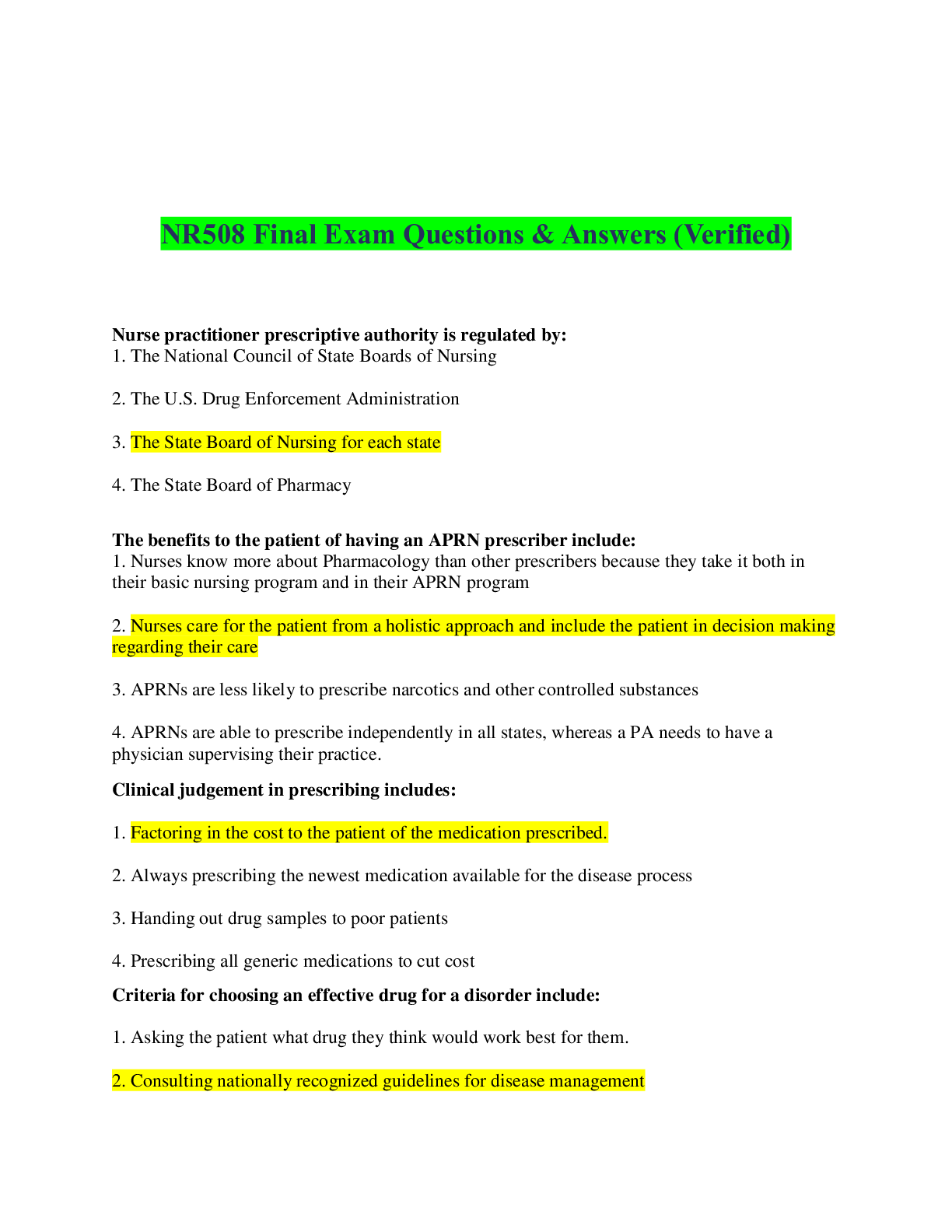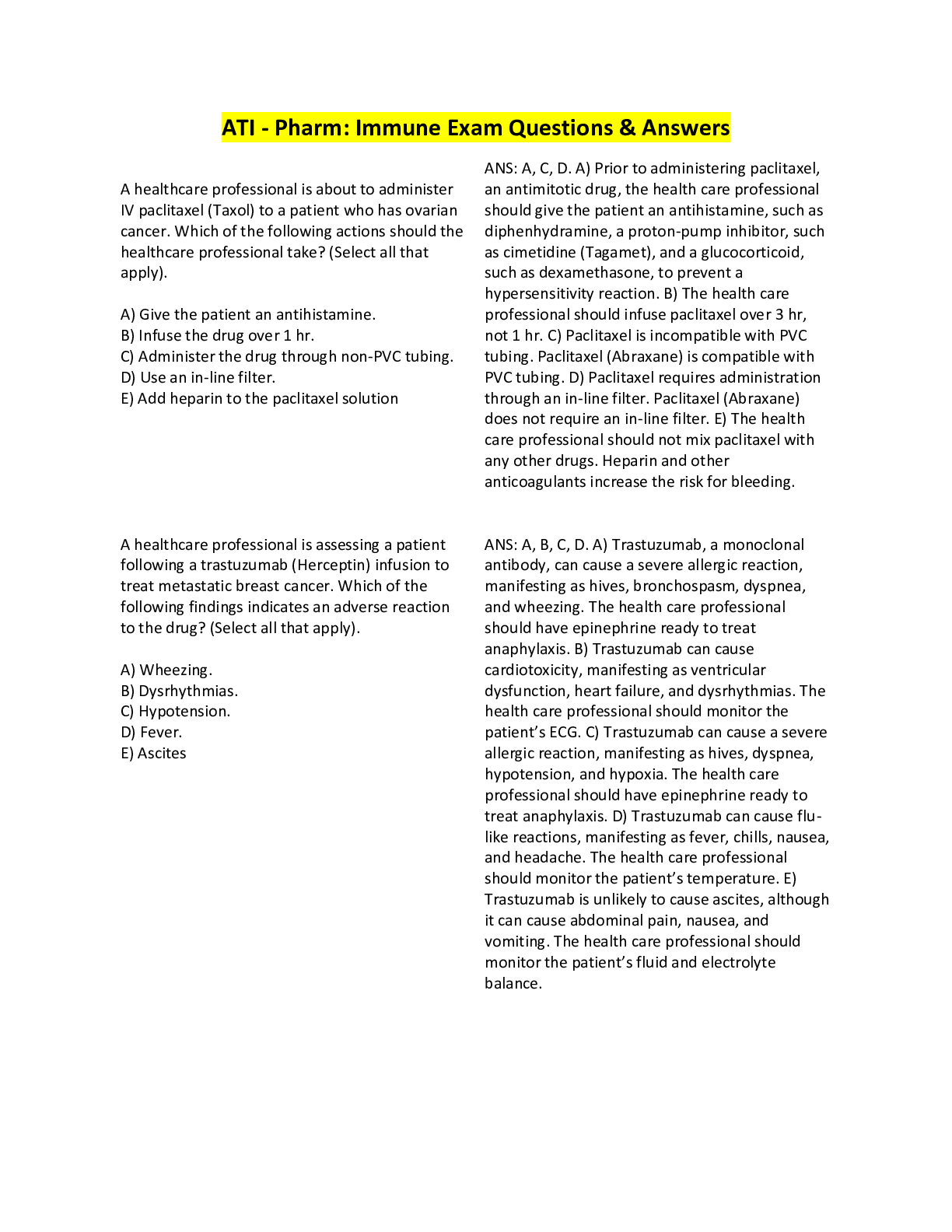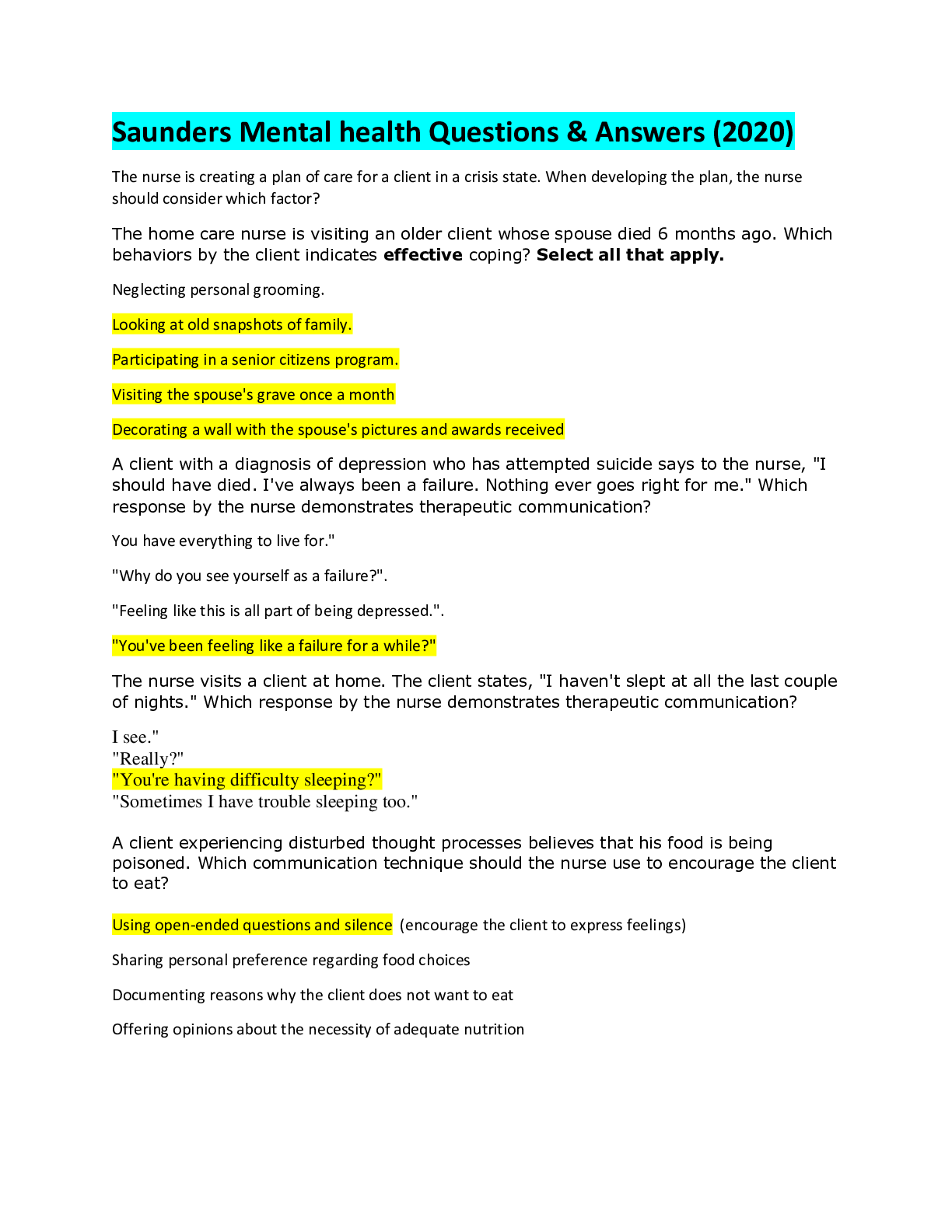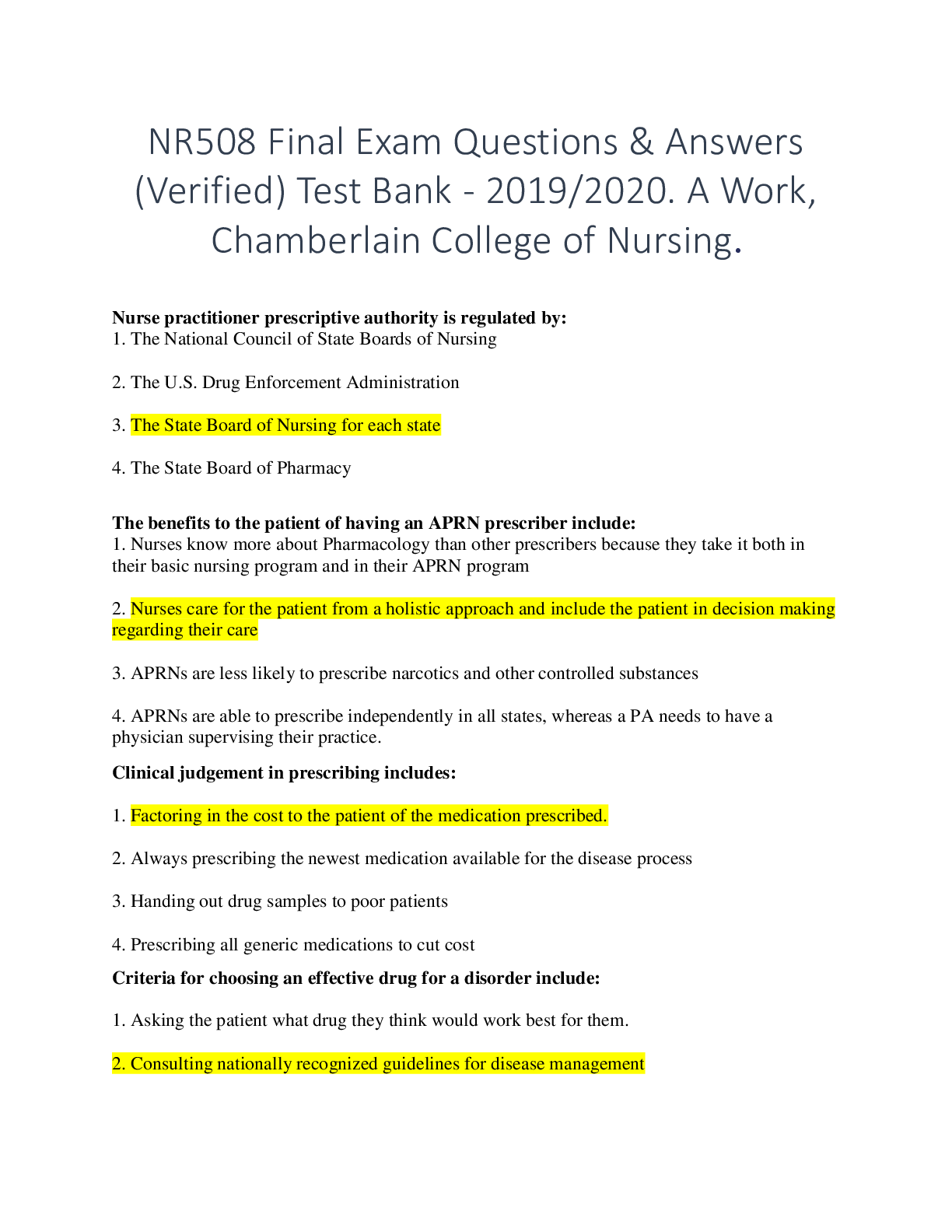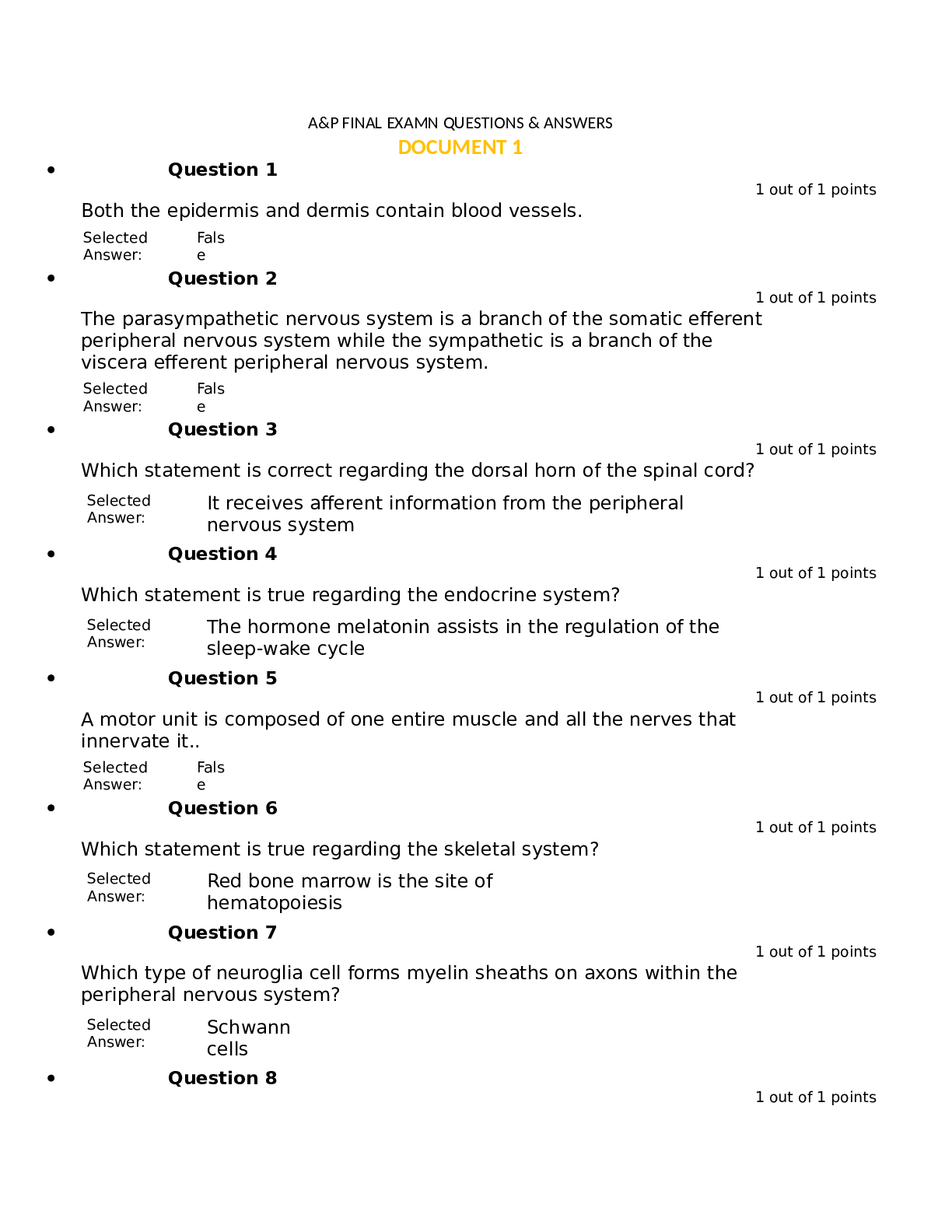ATI Testing Level 1 Proctored Exam Questions & Answers
Document Content and Description Below
ATI Testing Level 1 Proctored Exam Questions & Answers-A nurse stands facing a patient to demonstrate active range-of-motion exercises. Which of the following should the nurse do when demonstrating hy... perextension of the hip? - Move the leg behind the body As a nurse ambulates an unsteady patient, the patient becomes light-headed and begins to fall. Which of the following interventions by the nurse is appropriate in this situation? - Extend one leg and allow the patient to slide down it. A nurse is performing a physical assessment on a patient and instructs the patient to stand with his feet together and arms at his sides. The purpose of positioning the patient in this manner is to test which of the following? - Balance A nurse is caring for a hospitalized patient who is performing active range-of-motion exercises. Which of the following body movements should indicate to the nurse the patient has full range of motion of the shoulder? - Flexing the shoulder by raising the arm from a side position to a 180 degree angle A nurse is observing an assistive personnel (AP) who is using a mechanical lift with a hammock sling to transfer a patient from the bed to a chair. The nurse should intervene if the AP - Leaves the bed in the lowest position throughout the procedure. A nurse is about to transfer to a chair a patient who has a weak left leg. Which of the following actions by the nurse demonstrates correct transfer technique? - Aligning the nurse's knees with the patient's knees just before the transfer A nurse in the emergency department is caring for a patient who has knee injury. The patient will be discharged and will be using a pair of axillary crutches for the first time. Which of the following instructions should the nurse include when discharging this patient? - Hold the crutches on the unaffected side when preparing to sit in a chair. A nurse who is administering a return-flow enema to a patient should instill 100 mL of enema fluid and then - Lower the container to allow the solution to flow back out While a nurse is administering a cleansing enema, the patient reports abdominal cramping. Which of the following is the appropriate intervention? - Lower the enema fluid container A nurse is administering an enema medicated with sodium polystyrene sulfonate (Kayexalate) to an older adult patient who has hyperkalemia. The nurse should insert the tip of the rectal tube - 7.5 cm to 10 cm (3 to 4 in) A patient who is postoperative is experiencing abdominal distention and is having difficulty expelling flatus. The nurse should anticipate receiving an order from the provider for which of the following types of enemas? - Return-flow A nurse is preparing to administer a cleansing enema to a patient who is prone to fecal incontinence due to poor sphincter control and is unlikely to retain the enema solution. Which of the following interventions is appropriate for this patient? - Place the patient in the dorsal recumbent position on a bedpan A nurse is preparing the to administer an oil-retention enema to a patient who has constipation. The nurse explains that the patient should try to retain the instilled oil for - At least 30 min, but preferably as long as he can A nurse is preparing an older adult patient to which of the following positions? - Left lateral with the right leg flexed A nurse is preparing to administer the first of two large-volume, cleansing enemas prescribed for a patient in preparation for a diagnostic procedure. Which of the following is an appropriate step in the procedure? - Warm the enema solution prior to instillation Nasogastric tube feedings are an appropriate choice for a patient who - is postoperative following laryngectomy A patient with a gastric ileus postoperatively requires nutritional support for approximately 2 weeks. Which of the following types of feeding tubes is appropriate for this patient? - Nasointestinal tube To determine how much of the length of a nasoenteric tube to insert, a nurse should measure the distance from the tip of the patient's nose to the earlobe and from the earlobe to the - Xiphoid process plus 20 to 30 cm more A nurse inserting a nasogastric tube asks the patient to flex her head toward her check after the tube passes through the nasopharynx. The action facilitates proper insertion of the tube by - Closing off the glottis A nurse is providing teaching to a patient who is receiving the intermittent nasogastric feedings. Which of the following should the nurse instruct the patient to report immediately? - Persistent coughing [Show More]
Last updated: 5 months ago
Preview 1 out of 21 pages

Buy this document to get the full access instantly
Instant Download Access after purchase
Buy NowInstant download
We Accept:

Reviews( 0 )
$14.50
Can't find what you want? Try our AI powered Search
Document information
Connected school, study & course
About the document
Uploaded On
Mar 04, 2024
Number of pages
21
Written in
Additional information
This document has been written for:
Uploaded
Mar 04, 2024
Downloads
0
Views
22

